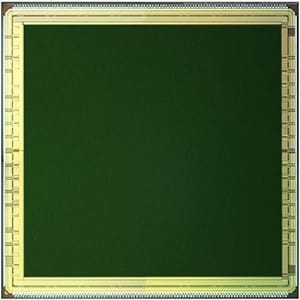- Canon’s latest development allows capturing and developing still images and videos in an extremely short time period
- Along with a high digital image resolution, the sensor also has a high time resolution
 Canon, a provider of innovative technologies for camera and vision capturing systems, has developed a single-photon avalanche diode (SPAD) image sensor with signal-amplifying pixels that are capable of capturing 1-megapixel images. SPAD image sensors are ideal for 2D cameras, which capture and develop still images and videos in an extremely short time period. These sensors can also be used in 3D cameras, thanks to their ability to obtain information about the distance between them and a subject as image data.
Canon, a provider of innovative technologies for camera and vision capturing systems, has developed a single-photon avalanche diode (SPAD) image sensor with signal-amplifying pixels that are capable of capturing 1-megapixel images. SPAD image sensors are ideal for 2D cameras, which capture and develop still images and videos in an extremely short time period. These sensors can also be used in 3D cameras, thanks to their ability to obtain information about the distance between them and a subject as image data.
Due to its ability to capture fine details during long durations of events and phenomena, this technology holds the potential for use in a wide variety of fields and applications including clear, safe and durable analysis of chemical reactions, natural phenomena including lightning strikes, falling objects, damage upon impact and other events that can’t be observed with precision by the naked eye.
A SPAD sensor is an image sensor in which each pixel possesses an electronic element. When a single light particle, called a photon, reaches a pixel it is multiplied to create an “avalanche” of electrons that result in the creation of a single, large electrical pulse. This ability to generate multiple electrons from a single photon is advantageous in terms of greater sensitivity during image capture and high precision distance measurement.
High digital image resolution
The latest development by the company helps in overcoming the difficulties associated with high pixel counts. By adopting a new circuit technology, the sensor uses a method known as photon counting to realise a digital image resolution of 1 megapixel. Additionally, the sensor has a shutter that allows simultaneous control of exposure for every pixel, making exposure time as short as 3.8 nanoseconds and produce clear and distortion-free image capture. The sensor is capable of capturing up to 24,000 frames per second (FPS) with 1-bit output, thus enabling slow-motion capture of fast movement within an extremely short time frame.
Better distance measurement
The sensor also features a high time resolution as precise as 100 picoseconds, enabling it to determine the exact timing at which a photon reaches a pixel with ultra-high accuracy. Leveraging this functionality, the sensor is capable of Time of Flight (ToF) distance measurement. With a high resolution of 1 megapixel and high-speed image capture, it can accurately perform 3D distance measurements in situations where multiple subjects overlap – useful in scenarios such as a vehicle distance measurement for self-driving automobiles and acquiring 3D spatial information for augmented reality, mixed reality and virtual reality and similar devices.
Canon’s development of a SPAD image sensor will greatly enable 3D cameras to provide in-depth information by implementing them in high-performance robotic devices.






